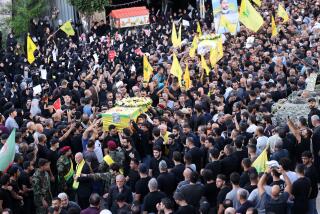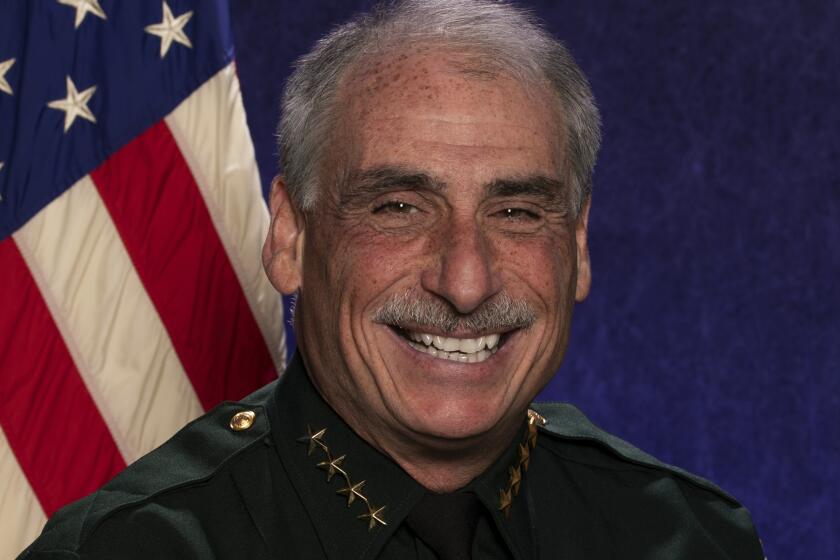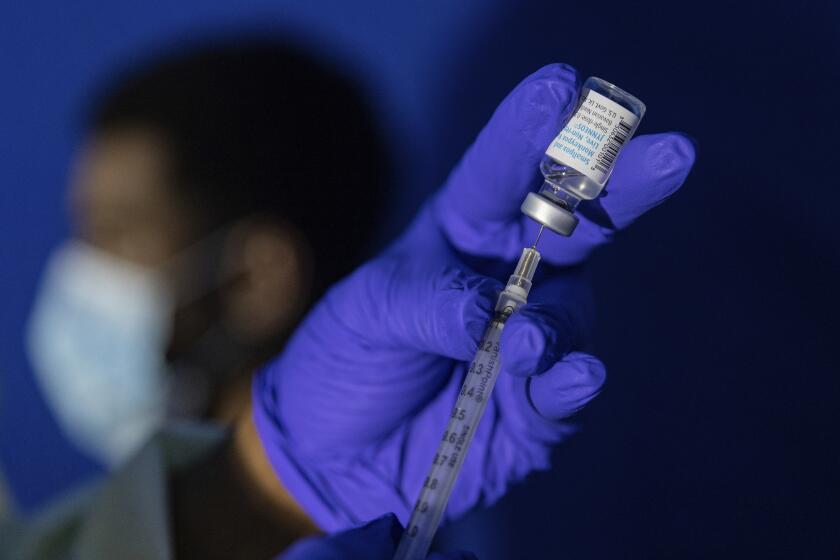Failed Launch Disappoints Shuttle’s Crew
The space shuttle Challenger’s main engines ignited with a burst of flame and then shut down safely three seconds before planned liftoff Friday when the ship’s computers detected an engine valve failure.
Shuttle Cmdr. Gordon Fullerton said that he and his six crewmen were disappointed but thankful that the ship’s complex computer system worked as planned and kept Challenger from taking off without a backup system.
The 2,257-ton ship remained anchored to the launch pad and was not damaged. But it will not be able to fly on its ambitious Spacelab astronomy mission for at least a week and perhaps much longer. The mission has been in the planning stage for seven years.
The seven crewmen left the shuttle cabin 40 minutes after the abortive launch and were driven back to their Kennedy Space Center quarters.
‘Crew Is Just Fine’
Anthony England, who had waited 18 years for a chance to fly, left the shuttle first. He was followed by civilian scientists John-David Bartoe and Loren Acton, and then the rest of the crewmen--Story Musgrave, Karl Henize, co-pilot Roy Bridges and Fullerton.
“The crew is just fine,” Fullerton told reporters Friday evening, still wearing his blue flight suit. “We all have mixed emotions, certainly disappointment that we couldn’t get on with it because we were ready to go today. But (we were) also thankful that the system worked as it should, because the seven of us up there had a keener interest (than anybody) to be sure everything was right up to snuff before we went.
“The system did its thing properly, so we’ll do it right sometime in the future--near future, we hope.”
Thomas Utsman, shuttle operations manager, said it is possible that the faulty No.-2 engine can be fixed quickly enough for Challenger to be ready for flight in seven to 10 days.
But the abortive launch disrupted the National Aeronautics and Space Administration’s carefully planned launch-a-month schedule for the rest of the year. Utsman said that “we’ve got to make some hard choices fairly quickly” about whether to attempt Challenger’s Spacelab mission as soon as possible or proceed with plans to test-fire the fourth shuttle, Atlantis, July 30 as planned.
The scientists in charge of the mission’s experiments said that they wanted to fly again as soon as possible, even though lighting conditions later this month will ruin one astronomical experiment.
Complicating the situation is the fact that the shuttle Discovery is scheduled to take off Aug. 24 to rescue a satellite stranded in space last April. That mission would probably proceed as planned, Utsman speculated.
Robert Lindstrom, a shuttle engine specialist, said that Friday’s problem involved a valve that controls hydrogen used to cool the No.-2 engine. The valve has redundant controls, and one control system failed. The computers are programmed to stop the launch under those conditions.
Started 7 Times
The No.-2 engine had operated normally on three previous flights and has been started a total of seven times, including ground tests.
Friday’s planned launch would have been the 19th shuttle flight in four years. It was the second abortive launch by a shuttle in 13 months.
A similar, but not identical, engine valve problem shut down the shuttle Discovery on June 26, 1984. That ship was finally launched two months later.
Challenger’s three main hydrogen-fueled engines ignited normally at 4:30 p.m. EDT, and the 184-foot spaceship rocked back and forth as the engines’ 1 million pounds of push strained against the launch pad anchors. The sequence was stopped before the large twin booster rockets fired. That would have committed Challenger to flight.
Expected ‘Big Bang’
“I was expecting to feel the big bang of the (boosters) about four seconds after that first shaking started,” said Fullerton, who was co-pilot during a flight of Columbia in 1982. “As the shaking went on, I thought this was the longest four seconds I ever waited.
“Roy Bridges, who has the main-engine chamber-pressure meters on his panel, said, ‘We shut down’ about simultaneously with the fact that the shaking stopped, so it was clear that we were scrubbed.”
Launch control spokesman James Ball said that there was no indication of fire around the shuttle, but water was sprayed on the ship as a precaution. There were minor fires after the abortive launch of Discovery 13 months ago.
Challenger was to have spent a week in orbit conducting astronomical and other research.
Busiest, Most Complicated
Dr. Eugene Urban, the chief scientist for the long-awaited Spacelab mission, had called it the busiest, most complicated and potentially one of the most productive shuttle flights yet.
“For a person who’s interested in new things and discoveries and new knowledge, there couldn’t be a better mission,” crew member Acton said.
Henize, who at 58 is the oldest man to be given a spaceflight assignment, holds a doctorate in astronomy. England holds a Ph.D. in Earth and planetary sciences. Like England, Henize joined the astronaut corps in 1967 and has yet to fly in space.
Bartoe is an astrophysicist with the Naval Research Laboratory in Washington. Acton, an expert in solar research, is a senior scientist with the Lockheed Space Sciences Laboratory in Palo Alto.
Musgrave is a Jack-of-all-trades doctor serving as flight engineer. He has flown before.
More to Read
Sign up for Essential California
The most important California stories and recommendations in your inbox every morning.
You may occasionally receive promotional content from the Los Angeles Times.









